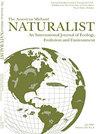修复后的回水和大型洪泛平原河流中水管理结构对周围鱼类群落的影响
IF 0.6
4区 环境科学与生态学
Q4 Agricultural and Biological Sciences
引用次数: 1
摘要
摘要水管理结构(WMS)用于调节大型洪泛区河流回水及其邻近河流系统之间的水位,从而在维持优质回水栖息地和为河流系统提供利益之间实现平衡。这些WMS的设计和运营依赖于独特的管理目标,其对周围生态系统的影响研究不足。从2016年到2018年,我们量化了周围鱼类组合(即回水和河流丰度和组成)对Emiquon保护区WMS操作的响应。Emiquon保留区是一个2723公顷的恢复漫滩湖,位于美国伊利诺伊河主河道附近。记录了环境条件,在三个操作水平下,在WMS两侧使用船电捕鱼收集鱼类:封闭和无流动、重力流动的水和机械向河流抽水。多变量分析确定,不同作业水平的Emiquon保护区内鱼类群落组成没有差异。当WMS关闭并机械抽水时,河流内的群落组成存在差异。环境参数随季节变化,WMS运行水平变化,但表明当WMS机械抽水时,河流中的叶绿素a增加,尽管伊利诺伊河中WMS下游200 m范围内的叶绿素a减少。这项研究表明,尽管向大型河流生态系统提供了叶绿素a,但恢复的回水和像WMS这样运作的栖息地之间的管理联系对鱼类群落有着可变的、空间孤立的影响。本文章由计算机程序翻译,如有差异,请以英文原文为准。
Operational Impacts of a Water Management Structure on the Surrounding Fish Assemblages in a Restored Backwater and a Large Floodplain River
Abstract. Water management structures (WMS) are used to regulate water levels between large floodplain river backwaters and their adjacent river systems offering a balance between maintaining quality backwater habitat and providing benefits to the river systems. The design and operation of these WMS is dependent on unique management goals, and their impacts on the surrounding ecosystem are understudied. From 2016–2018 we quantified the response of the surrounding fish assemblages (i.e., backwater and river abundance and composition) to the WMS operation at the Emiquon Preserve, a 2723 ha restored floodplain lake located adjacent to the main channel of the Illinois River, U.S.A. Environmental conditions were recorded, and fish were collected using boat electrofishing on both sides of the WMS under three operational levels: closed and no flow, gravity flowing water, and mechanically pumping water to the river. Multivariate analyses determined that there was no difference in fish community composition within the Emiquon Preserve among operation levels. Within the river there were differences in community composition when the WMS was closed and mechanically pumping water. Environmental parameters varied seasonally and WMS operation level varied but indicated an increase in chlorophyll-a in the river when the WMS was mechanically pumping water, although the chlorophyll-a decreased within 200 m downstream of the WMS in the Illinois River. This study suggests that managed connections between restored backwater and habitats operated like this WMS have variable, spatially isolated impacts on fish communities despite supplying chlorophyll-a to large river ecosystems.
求助全文
通过发布文献求助,成功后即可免费获取论文全文。
去求助
来源期刊

American Midland Naturalist
环境科学-生态学
CiteScore
1.20
自引率
0.00%
发文量
38
审稿时长
18-36 weeks
期刊介绍:
The American Midland Naturalist has been published for 90 years by the University of Notre Dame. The connotations of Midland and Naturalist have broadened and its geographic coverage now includes North America with occasional articles from other continents. The old image of naturalist has changed and the journal publishes what Charles Elton aptly termed "scientific natural history" including field and experimental biology. Its significance and breadth of coverage are evident in that the American Midland Naturalist is among the most frequently cited journals in publications on ecology, mammalogy, herpetology, ornithology, ichthyology, parasitology, aquatic and invertebrate biology and other biological disciplines.
 求助内容:
求助内容: 应助结果提醒方式:
应助结果提醒方式:


